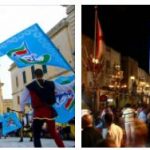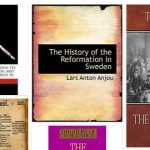(Republic of Malta; Repubblika ta ‘Malta). Southern European state (315.6 km²). Capital: Valletta. Administrative division: regions (6). Population: 410,290 (2008 estimate). Language: English and Maltese (official). Religion: Catholics 95%, non-religious / atheists 2%, Muslims 0.7%, others 2.3%. Monetary unit: euro. Human Development Index: 0.894 (36th place). Member of: Commonwealth, Council of Europe, EBRD, UN, OSCE, EU and WTO.
CULTURE: GENERAL INFORMATION
Malta’s culture is Mediterranean with strong European influences. Each successive population in the dominion of the island has left deep traces on the development of its material and immaterial culture. The Maltese speak a language whose grammar is of Arabic origin, as are many toponyms; the Maltese vocabulary is a melting pot of words of Arabic, Romance, and English origin; the handwriting is instead based on the Roman script: Maltese is the only language of Semitic origin written with a Latin alphabet. The 150 years of English rule have progressively supplanted the Italian cultural influence, leaving English as one of the two official languages of the island (the other is Maltese), and many other elements belonging to the material culture, like the Maltese passion for English football and driving on the left. However, British rule has failed to supplant the Catholic Church’s influence on the island, which remains the only country in Europe where abortion and divorce are illegal. The Maltese intellectual class looks to Great Britain as the main cultural reference, while popular culture is influenced by Italian television, which with Rai and Mediaset arrived on the island before it acquired its own television channels. Academic education is given at the University of Malta in Valletta, founded in 1769. The University has a prestigious history, and is a center of attraction for foreign students, thanks to its international dimension. The archipelago has a rich museum system in relation to its size; the most representative institutions are the National Museum of Archeology and the National Museum of Art, both in Valletta.
CULTURE: TRADITIONS
The traditional popular culture of the archipelago is very rich in the musical field, with influences coming from North Africa and Sicily. The most representative element is an ancient song called ghana, that is a rhyming poem accompanied by the sound of the guitar. Sung in bars and on the streets, it is traditionally believed to be the music of the peasants. Religious festivals take place all year round; Carnival celebrations represent one of the most significant events on the Maltese cultural calendar. They date back to 1560 and, while involving the entire archipelago, are concentrated in the capital Valletta. The famous bobbin lace craftsmanship is still flourishing in Gozo. Maltese cuisine is very similar to Sicilian cuisine; the diet is based on the consumption of pasta, seasonal products and fish.
CULTURE: LITERATURE
According to globalsciencellc, Maltese literature consists of works written in no less than six languages: Arabic, Latin, Sicilian, Italian, Maltese and English. The period from 870 to 1091, of Arab domination, was of central importance for Maltese linguistic history. In the field of literature, the first Maltese verse writers of which we know date back to that period and expressed themselves in Arabic at the Palermo court of Roger II. During the Norman domination the Sicilian took over from the Arab; later the Knights of the order of San Giovanni imposed Tuscan as a language of culture, but there are also traces of other Italian dialects. During the seventeenth century Maltese authors, including Giacomo Farrugia and Carlo Magri wrote theatrical texts in Italian. The imposing poem La Valletta dates back to 1670by Bartolomeo Dal Pozzo which is inspired by the Gerusalemme Liberata by Torquato Tasso. Numerous theatrical works in Italian dating back to the eighteenth century. The first works written in Maltese date back to the first decades of the century. XX when political events and above all the increasing importance of the nationalist movement infuse Maltese literature with a new enthusiasm. Thus a popular literature in Maltese developed, recognized as an official language only in 1934, of an epic-historical nature and inspired above all by the figure of the rebel priest Mikiel Xerri. In fact, the novels Nazju Ellul (1909) by Guzè Muscat Azzopardi, That Thiet Saltniet, are inspired by this character.(1938) by Guzè Aquilina, Angli Tau-Niket (1938) by Gino Muscat Azzopardi, Id-Dinja Rota (1965) by Guzè Galea. The character of Father Xerri was also dear to romantic poets and was the protagonist of several works: Lil Dun Mikiel Xerriand Fil-Muzew by Dun Karm, Lil Dun Mikiel Xerri by Gorg Zammit and Lil Dun Mikiel Xerri by Karmenu Vassallo. The latter, born in 1913, stands out as one of the most inspired voices of Maltese poetry, and is compared to the figure of Giacomo Leopardi as regards the spiritual itinerary and the literary experience. In the context of contemporary Maltese literature, the poets Gorg Zammit and A. Buttigieg and the playwrights Ivo Muscat Azzopardi and G. Diacono emerge. Among the novelists are appreciated G. Ellul Mercer, G. Galea, Nicholas Monsarrat and the more popular Francis Ebejer. In the field of literary historiography, the works of OF Tecajoli, Poets Maltesi d’oggi (1932), and of O. Friggieri author of La cultura italiana a (1978) and Literary movements and Maltese romantic consciousness (1980) are worthy of note.









